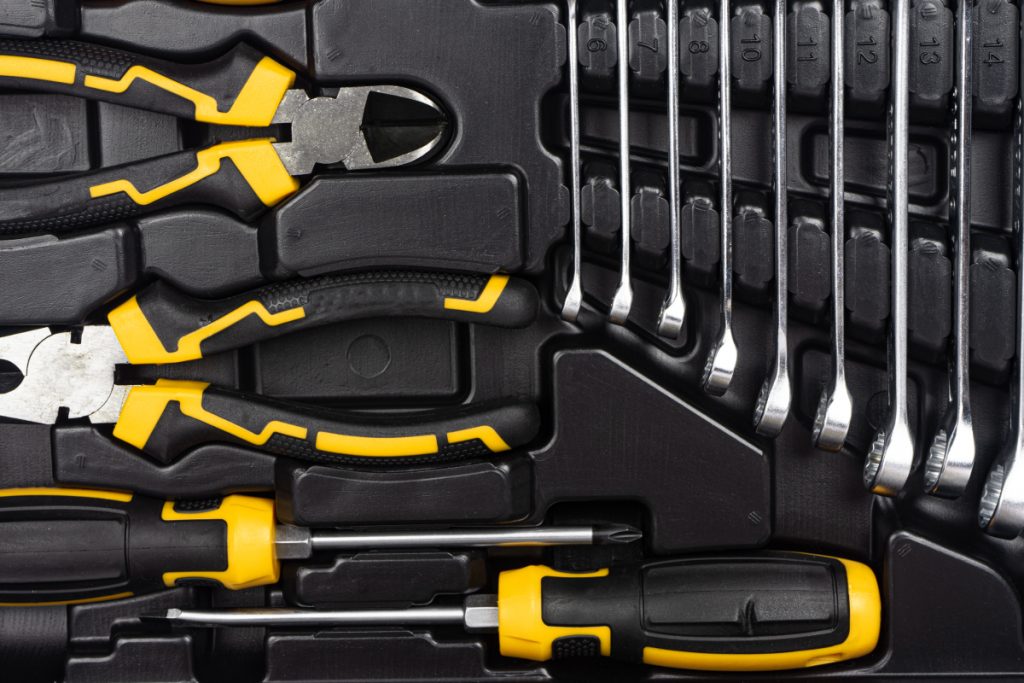What are the benefits of insert molding for your plastic parts?
- Increases design flexibility
- Reduces assembly and labor costs
- Increases reliability
- Reduces size and weight
- Can be used with a variety of materials
Plastic parts have taken over a variety of industries, from medical to automotive and even to aerospace, and it’s all due to the innovative and cost-effective methods of injection molding. One such method is the use of insert molds, which offers advantages not otherwise possible in other fabrication methods. Not sure what this method does, or what the benefits of insert molding are? Read on to learn more about this process and how it can help you and your business produce better plastic products.
What is Insert Molding?
This is a plastic injection molding process in which molten plastic is injected into a mold. The mold contains one or more items that are positioned strategically around the mold.
When the liquid cools and sets, it creates a plastic unit that integrates the “inserts.” These inserts are any type of material or component that can survive both extreme conditions from the injection molding process and high-temperature environments.
Insert molding can be performed with a wide variety of inserts, such as:
- Metal fasteners
- Tubes and studs
- Bearings
- Electrical components
- Labels, decorations, and other aesthetic elements
Increases Design Flexibility
Insert molding allows designers and manufacturers to make virtually any type of shape or design that they desire. This is not easily achievable with other methods or materials, such as metal forming. For example, when creating a plastic electronic enclosure, insert molding can integrate electrical leads and nodes to make the overall design more streamlined.
Insert molding also makes aesthetic additions, such as labels and decorative parts, to be applied seamlessly into the design. While this is often considered a secondary operation, insert molding makes it much easier to include such features.
Designers simply have to choose the right materials and include these inserts into the final mold design. This ease of integration allows injection molders to expand the range of possibilities for engineering and design for a variety of plastic parts and applications.
Reduces Assembly and Labor Costs
As previously mentioned, insert molding helps combine several separate components into one injection molding process, making manufacturing more cost-effective. With insert molding being a one-step process, you greatly minimize the need for additional assembly steps and labor costs.
Because it only takes one injection to create a complete plastic assembly, there is less opportunity for error during manufacturing. This helps cut back on waste and material costs.
Insert molds also enable you to use plastic in various ways and combine it with several other elements. This advantage used to be only accessible with metal materials, which was difficult to work with. So, instead of adding metal inserts and enclosures, you can swap in plastic resins, which are much more affordable.
Increases Reliability
In insert molding, the melted plastic flows freely around every insert before cooling and permanently setting. This means every insert is firmly held in plastic, reducing the chance of parts becoming loose or misaligned while increasing their resistance to vibration and shock.
More design elements and components could be placed on the plastic part with precision, which is difficult to achieve when using a multi-step assembly line. Thus, the plastic part performs more reliably and has enhanced durability and service life.
Reduces Size and Weight
Insert molding eliminates the need for adhesives, connectors, and fasteners for complex plastic parts. It also eliminates the need for metal enclosures, while also allowing you to add metal inserts to increase strength and durability.
As a result, insert molding creates plastic parts that are much smaller and lighter in weight, despite being more functional and reliable than plastic parts made with other methods.
A simple example of how this aspect of injection molding benefits you is automotive parts. With insert molding, you can create thinner doors and console components. This creates more room in the interior of the car, as well as a lighter vehicle altogether. Finished cars made with insert molded parts are therefore much more cost-effective.
Can be Used with a Variety of Materials
The most commonly used resins for this injection molding method are thermoplastics. You normally see polyethylene, polystyrene, and nylon being used in insert molds. This is because they are lightweight, durable, and ideal for a wide range of plastic products — from commodity items to heavy-duty industrial ones.
But, insert molding is a process that can use many different types of plastic resins. These include high-performance plastics, which can be difficult to use in other injection molding methods. They can also include thermosets, such as epoxy, and elastomers.
Who Benefits from Insert-Molded Plastic Parts?
Many industries and applications benefit from the many advantages of insert molding. Here are a few examples:
- Automotive: Insert molding allows manufacturers to replace metal with plastic parts, which reduce weight and improve fuel economy.
- Medical: Many medical devices have fastener, weight, and size requirements, which are easier to meet with insert molding.
- Consumers: Insert molding has been used to make a variety of commodity items, such as electronics and household appliances.
- Aerospace: Aircraft components have to be streamlined and light, but also highly durable. Insert molding helps create parts for aircraft interiors, controls, communications, and more that meet these requirements.
Key Takeaway
Now that you have a clearer picture of the process and benefits of insert molding, you can decide if this is the right method for creating your plastic product.
To maximize the advantages of this method, look for a trusted plastic injection molding company like Richfields. Doing so will ensure your end product has added value while meeting all your manufacturing needs. To consult with the Richfields’ team about using this process for your project, contact us here!
